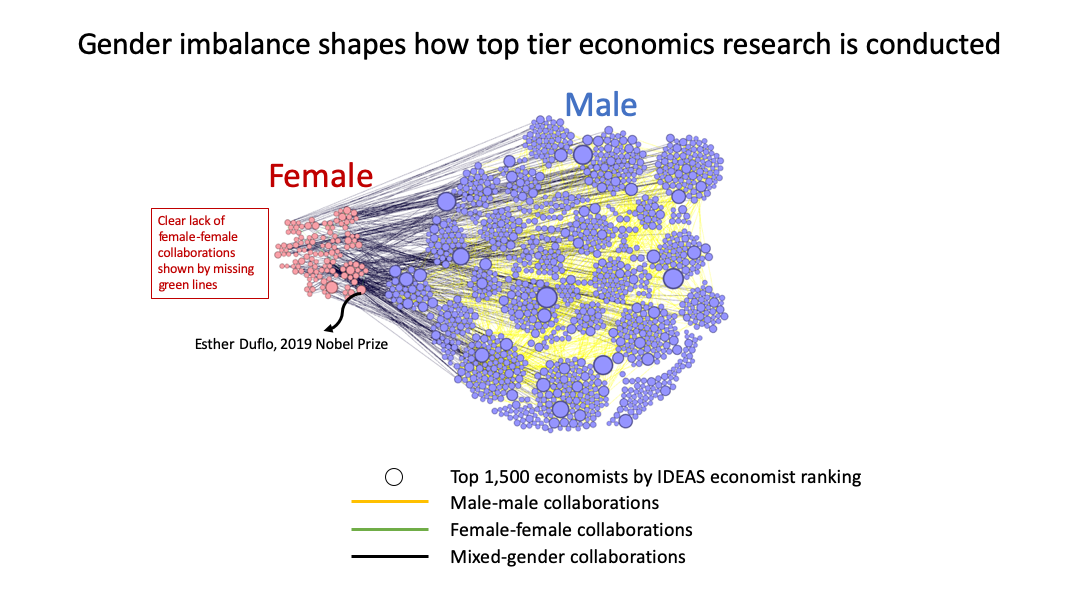
Looking at research outputs of 1,500 top economists in three prominent economics journals (NBER, CEPR, VOX) over a span of 15 years, I found that our discipline is a crushing and unrewarding environment for female economists. Here are some insights:
-
Male economists dominate the field. Female economists are dominated by sheer numbers. There is only one top female economist for every 10 top male economists. Furthermore, reputation and citations are very skewed towards the male colleagues. In the graph, I singled out Esther Duflo because, despite winning the 2019 Nobel Prize, Duflo's ranking based on citations and reputation (shown by size of the bubble) is a far cry from her male colleagues who have also won previous Noble Prizes. From a signalling point of view, this sends a very negative message to aspiring female economists - that even if you have reached the top of the field, your reputation within academia might still not be as great as your male colleagues.
-
Male economists can make it to the top if they only collaborate with the same gender but this is not true for female economists. For many of the top male economists, you can still do very well in the field if you only ever collaborated with the same gender. Male-male collaborations is commonplace as shown by the yellow lines in the graph. However, this is not true for female economists. In fact, far from it - all the top female economists have at least one collaboration with the opposite gender. This shows the extreme skew in power and dominance of the male research agenda in the economics discipline.
-
Female-female collaborations are practically non-existent! In the graph, this is seen in the female cluster with no visible green lines between them that was supposed to indicate female-female collaborations. This suggests that the field is male-oriented. A lack of female voice represents a huge opportunity cost for the discipline since the system seems to suppress female economists' freedom to lead research among themselves.
Gender imbalance as shown by this graph is not just a numbers game. We need to radically change the system such that there is more academic freedom within the field. If not, we are incurring significant costs by hampering diverse talents from making significant breakthroughs in the field that we so desperately need to solve many big challenges in the 21st century.